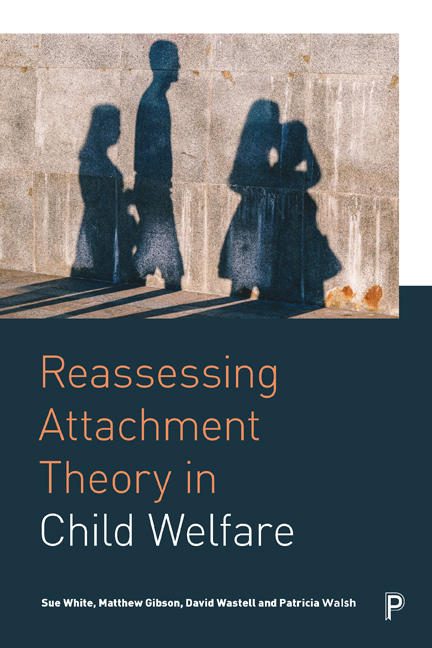Book contents
- Frontmatter
- Contents
- List of Figures, Table and box
- About the Authors
- Acknowledgements
- Preface: Becoming Attached to Attachment Theory
- 1 Love is a Wondrous State: Origins and Early Debates
- 2 Social work and the Attachment Story: a Felicitous Bond?
- 3 Shaping Practice: Prescribing Assessment
- 4 Practising Attachment Theory in Child Welfare
- 5 Exhibiting Disorganised Attachment: not even Wrong?
- 6 Breaking the back of love: Attachment Goes Neuro-Molecular
- Coda: love Reawakened?
- References
- Index
1 - Love is a Wondrous State: Origins and Early Debates
Published online by Cambridge University Press: 23 February 2021
- Frontmatter
- Contents
- List of Figures, Table and box
- About the Authors
- Acknowledgements
- Preface: Becoming Attached to Attachment Theory
- 1 Love is a Wondrous State: Origins and Early Debates
- 2 Social work and the Attachment Story: a Felicitous Bond?
- 3 Shaping Practice: Prescribing Assessment
- 4 Practising Attachment Theory in Child Welfare
- 5 Exhibiting Disorganised Attachment: not even Wrong?
- 6 Breaking the back of love: Attachment Goes Neuro-Molecular
- Coda: love Reawakened?
- References
- Index
Summary
Great is the enterprise I have in mind. I am going to tell how Love, that fickle child, may captured be; Love that is wandering up and down in this wide world of ours. Airy is he, possessed of wings to fly withal. How shall we stay his flight? (Ovid, 1937, p 137)
In this chapter, we briefly summarise the origins of attachment theory. There are many other works to which the reader may refer for a more comprehensive view. The account we give here is necessarily brief and intended primarily to give a sense of the intellectual and conceptual affiliations of the major players. We attend to the assumptive base of the theory and its intellectual origins, and in so doing we raise some questions. The theory has always brought controversy; we will go on to summarise some of the debates of the latter half of the 20th century and what has become of them. We can see in these discussions enduring tensions and fissures, which are both scientific and moral.
Attachment theory as used in child welfare is generally attributed to the work of John Bowlby, James Robertson and Mary Ainsworth. For all of them, psychodynamic thought had been a major influence. Duschinsky et al (2015b, p 175) note the lineage: ‘ “Attachment” was the English word used … in translating Freud's genitive Anlehnungs, deployed in the Three Essays on Sexuality to refer to a kind of love which emerged on the back of (literally, “leaning-on”) the need of the infant for his or her caregiver for their self-preservation.’ ‘Object relations theory’ – most often associated with the work of Melanie Klein (for example, Klein, 1952) and Donald Winnicott (for example, Winnicott, 1964) – in which emphasis is placed on the early relations between the infant and the ‘primary object’ (mother), was a pivotal influence. Within Freudian psychoanalytic theory, neurosis had been accepted as an inescapable part of human existence, exemplified in Freud's quip in Studies in hysteria (Freud and Breuer, [1898]2004) about transforming hysterical misery into common unhappiness. In object relations theory, a psychologically secure and healthy adult life becomes theoretically achievable, through the idealised mother–infant relationship in which the mother becomes lost in her infant, in maternal reverie (Bion, 1962).
- Type
- Chapter
- Information
- Reassessing Attachment Theory in Child Welfare , pp. 1 - 22Publisher: Bristol University PressPrint publication year: 2019

